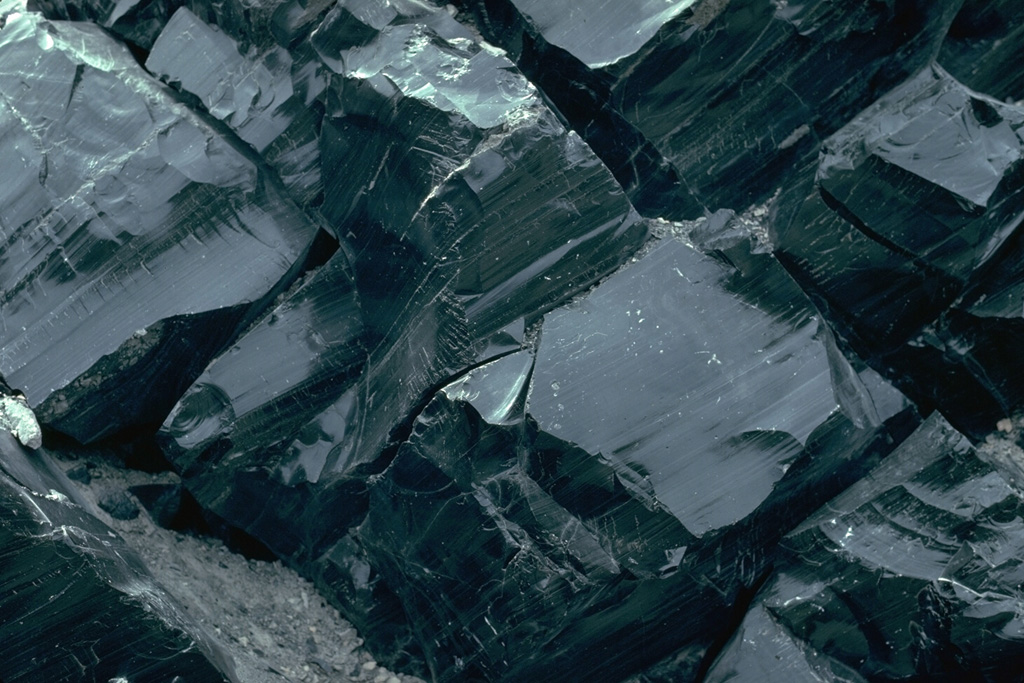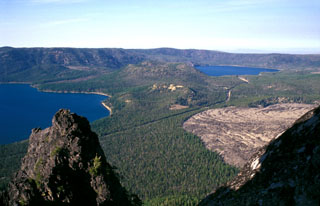Global Volcanism Program | Image GVP-03144

The Big Obsidian Flow erupted from Newberry caldera in central Oregon is composed of glassy rhyolite, formed when lava rapidly cools. The flow covers 20 km2 of the caldera floor. Obsidian flows are never entirely glassy, but also contain large amounts of frothy pumiceous material and devitrified (crystallized) spherulites, which commonly form bands alternating with layers of glass.
Photo by Lee Siebert, 1981 (Smithsonian Institution).
![]() This image is made available under the Public Domain Dedication CC0 license, but proper attribution is appreciated.
This image is made available under the Public Domain Dedication CC0 license, but proper attribution is appreciated.
Galleries: Lava Flows
Keywords: obsidian | lava flow | lava

Newberry
